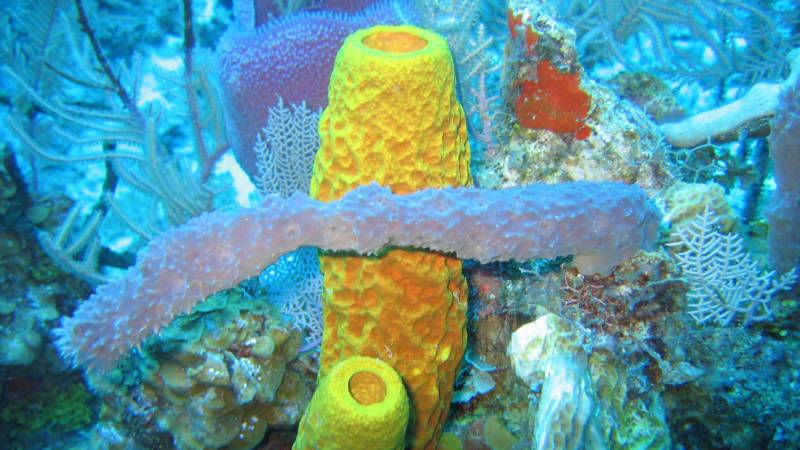More than 90 percent of Australia’s Great Barrier Reef is suffering from coral bleaching, according to a survey published by an Australian task force last month. While some coral can recover from bleaching, which results from warming water, scientists estimate that at least half of the bleached coral will not. Meanwhile, researchers have announced the discovery of a huge new coral reef system at the mouth of the Amazon River. We discuss the importance of coral reefs to global ecosystems and ongoing efforts to protect them.
As Coral Bleaching Devastates Australia's Great Barrier Reef, Scientists Look for Solutions
51:41

Sponge biodiversity and morphotypes at the lip of our wall site in 60 ft of water. Included are the yellow tube sponge, Aplysina fistularis, the purple vase sponge, Niphates digitalis, the red encrusting sponge, Spiratrella coccinea, and the gray rope sponge, Callyspongia sp. Image courtesy of Cayman Island Twilight Zone 2007 Exploration, NOAA-OE. (Wikimedia Commons)
Guests:
Steve Palumbi, director, Stanford University's Hopkins Marine Station; senior fellow,<br /> Stanford Woods Institute for the Environment
Ruth Gates, coral biologist; director, Hawaii Institute of Marine Biology
Patricia Yager, associate professor of Marine Science, University of Georgia
Sponsored